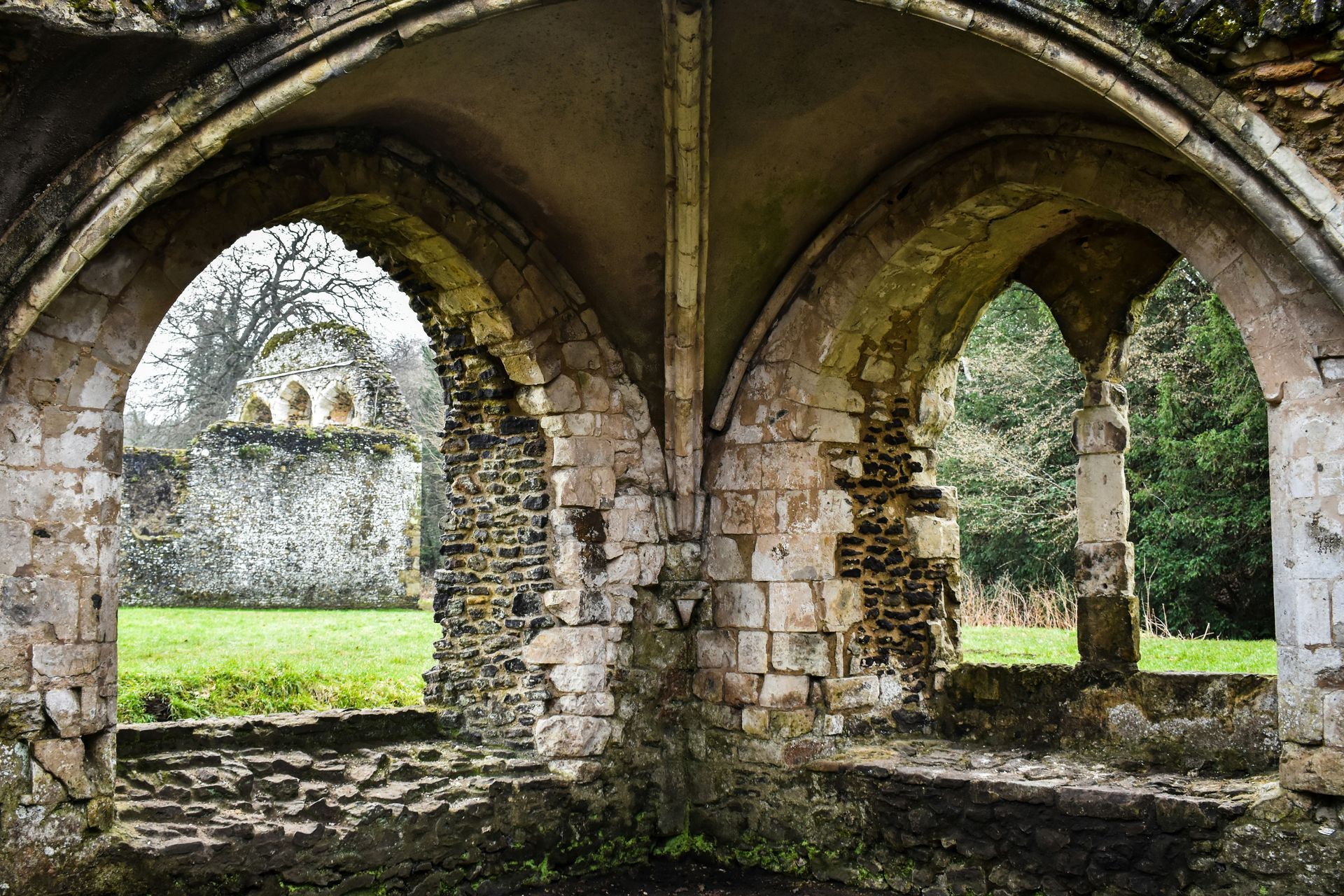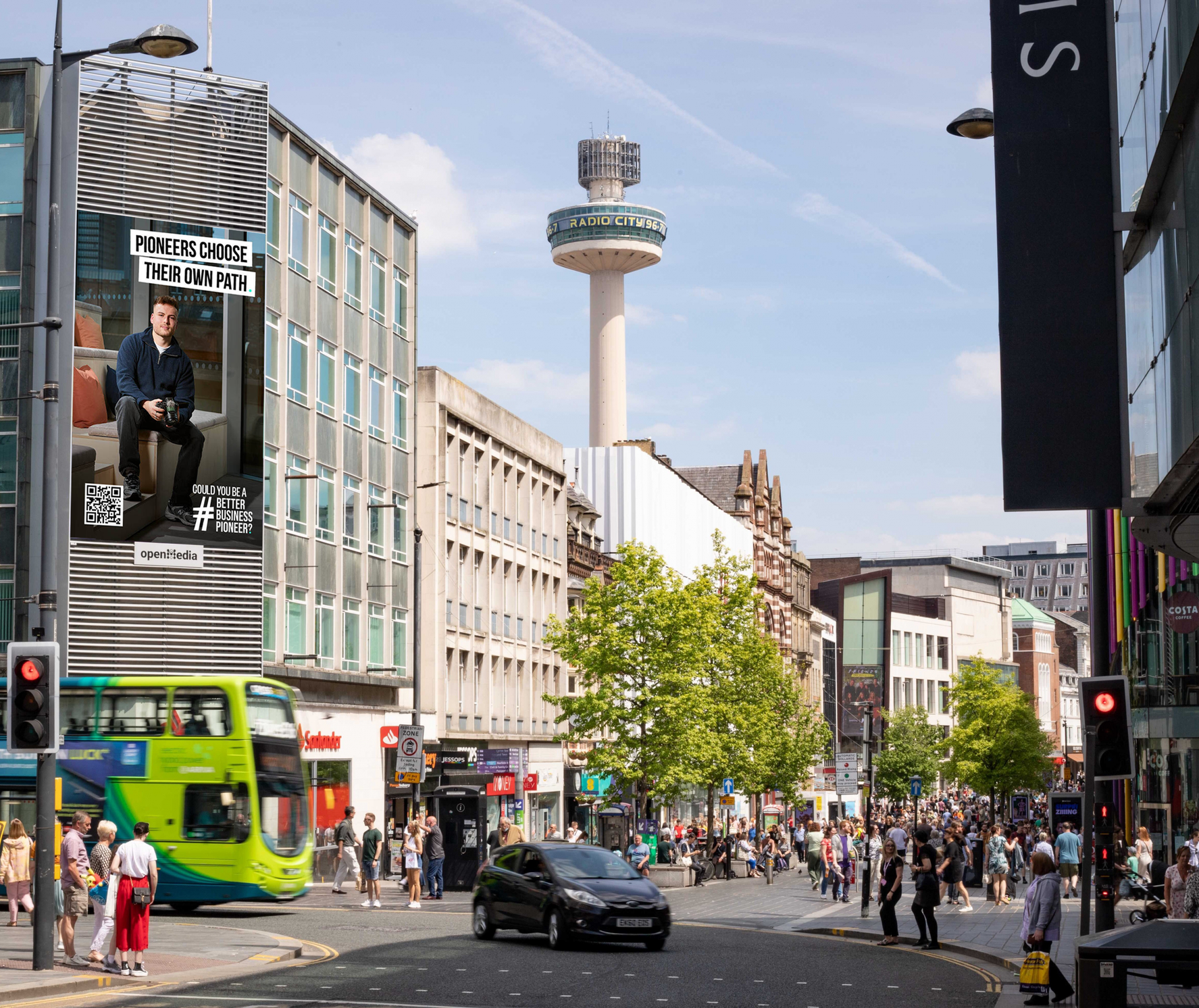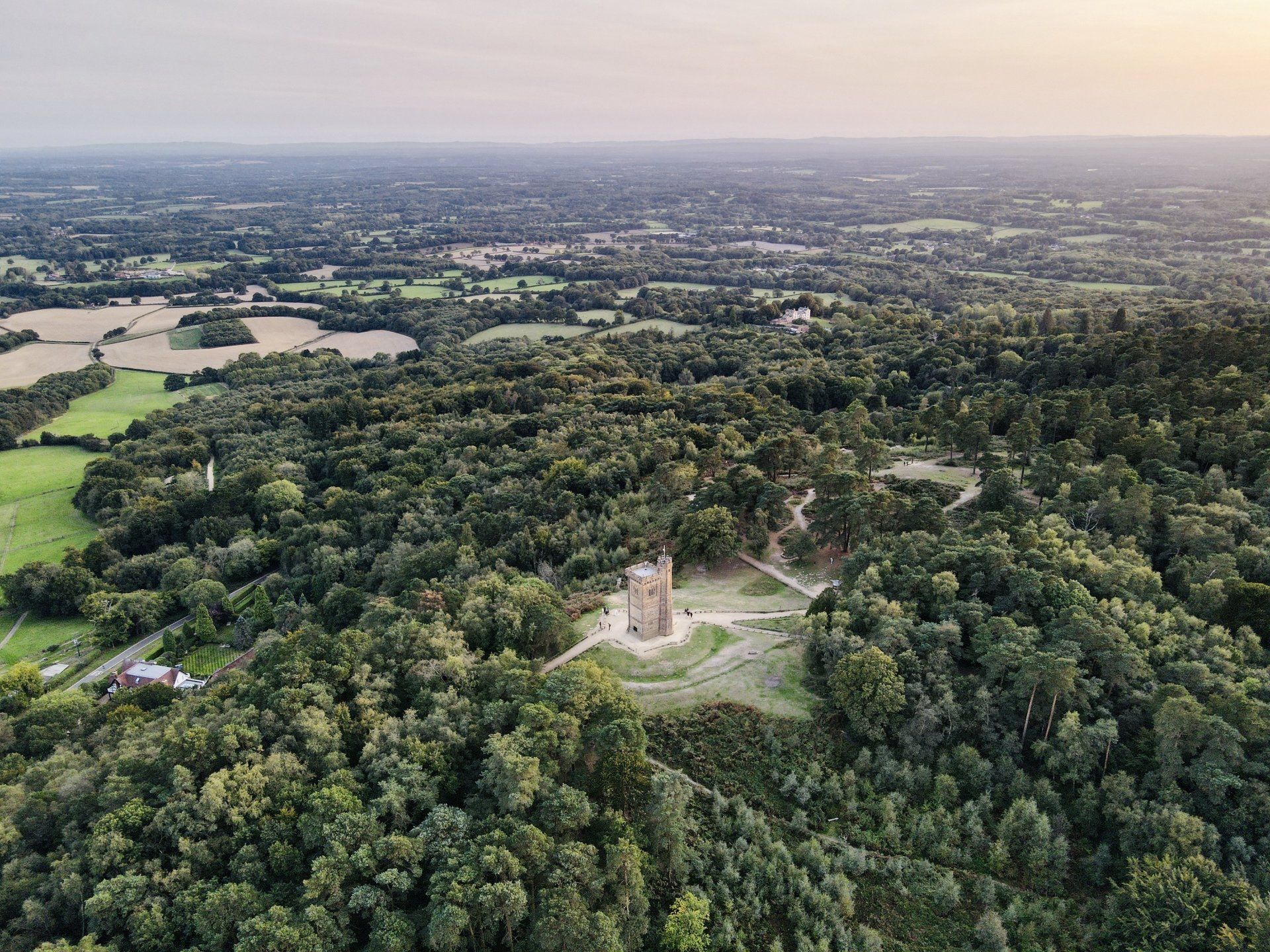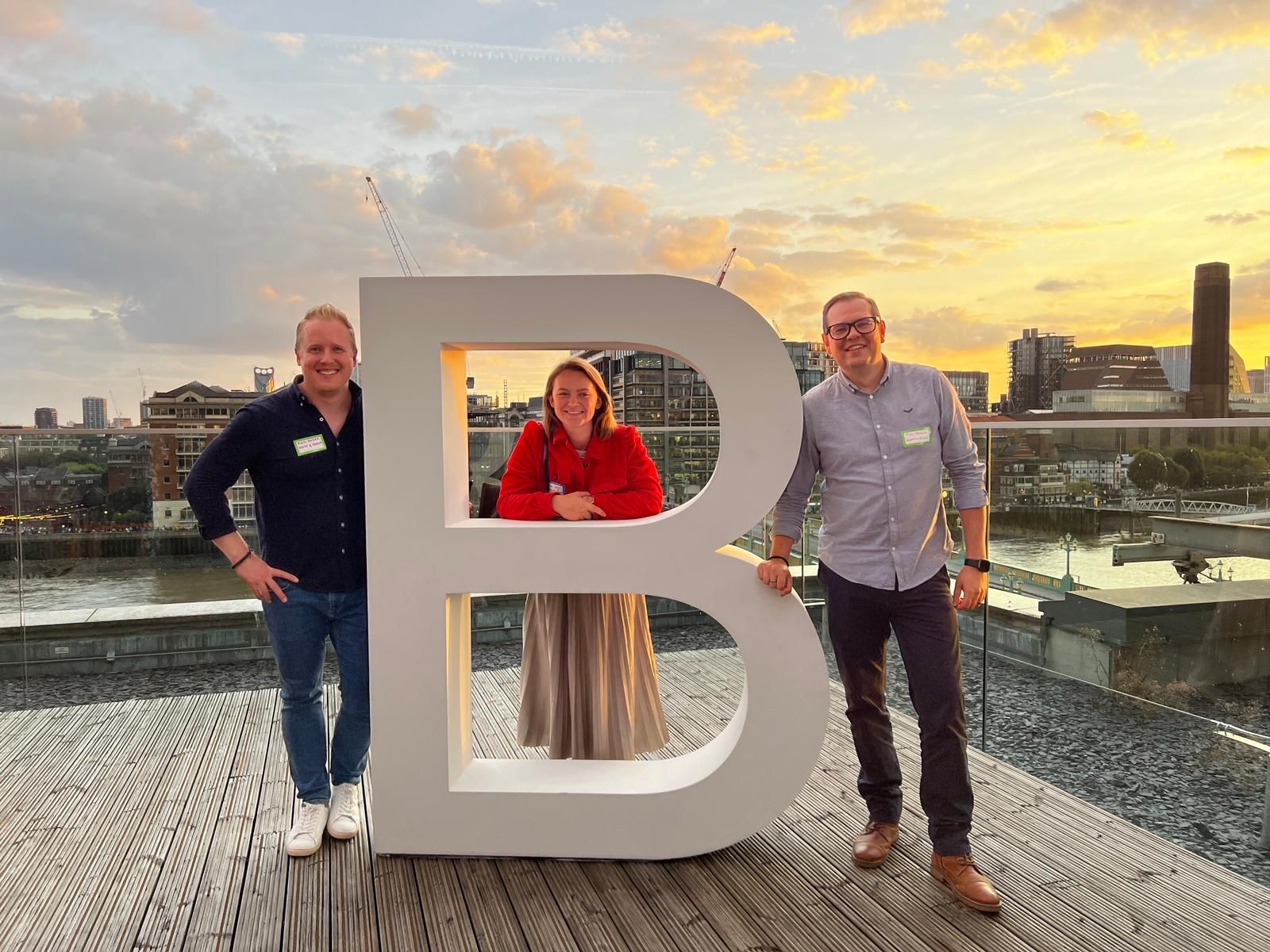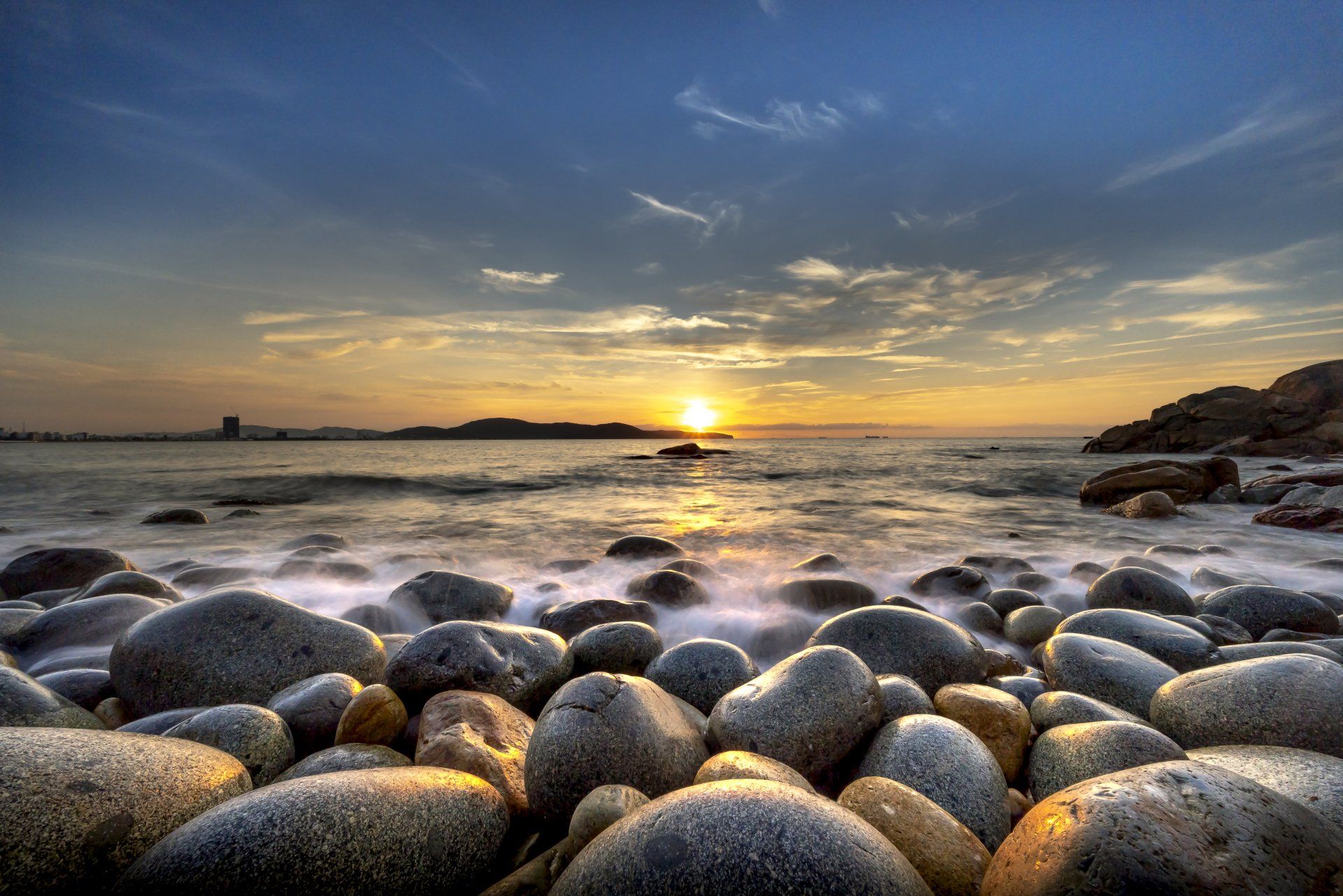Better brands 02: Activism, methane and the sweet story of Ben & Jerry
Ben & Jerry’s Homemade Holdings Inc., like ice-cream, is quite the mouthful. It also conjures thoughts of a small group of artisans, hand-making ice-cream from a rickety old outbuilding, selling it from the back of a horse and cart to weary travellers. Okay, we’re getting a little carried away here. Of course, Ben & Jerry’s are now owned by Unilever and saw a brain-freezing $170 million in revenue in 2021. That said, they
are a B Corp, and their overall impact score is 110, almost twice the median average.
Much like with Patagonia in our previous blog (if you missed that, you can read it here), we wanted to understand how a business can grow to such a staggering size and still be lauded as a ‘better brand’. Let’s be honest here, ice cream is technically a processed consumable and food manufacturing is intensive - with operations in 36 countries, B&J's footprint is truly global.
Perhaps it's because Ben & Jerry’s are well known for their public campaigning and outspokenness, having never exactly shied away from political and social issues. From supporting same sex marriage, to driving salary reform, openly criticising the UK government via Twitter, and taking a stand on Israel/Palestine, the brand have stayed true to the grassy roots they firmly planted when establishing the Ben & Jerry’s Foundation way back in 1985.
So grab a spoon and read on for the inside scoop on one of the most prolific food manufacturers in the world, and how they balance a quality product and strong, ethical values, with a heft environmental impact and global ambitions.
A Brief history of Ben & Jerry's
Ben Cohen and Jerry Greenfield are indeed real people. The childhood friends grew up in New York, with the pair taking an ice-cream making course instead of attending medical school. Ben suffered from anosmia, better-known as ‘smell blindness’, so he found himself relying on texture to bring some of his sensory experience back to eating. And so the story goes, that's why you find those distinctive chunks in today’s Ben & Jerry’s ice cream flavours.
The pair's early years saw them selling ice cream from empty gas stations and old mills until 1981, when they opened a store
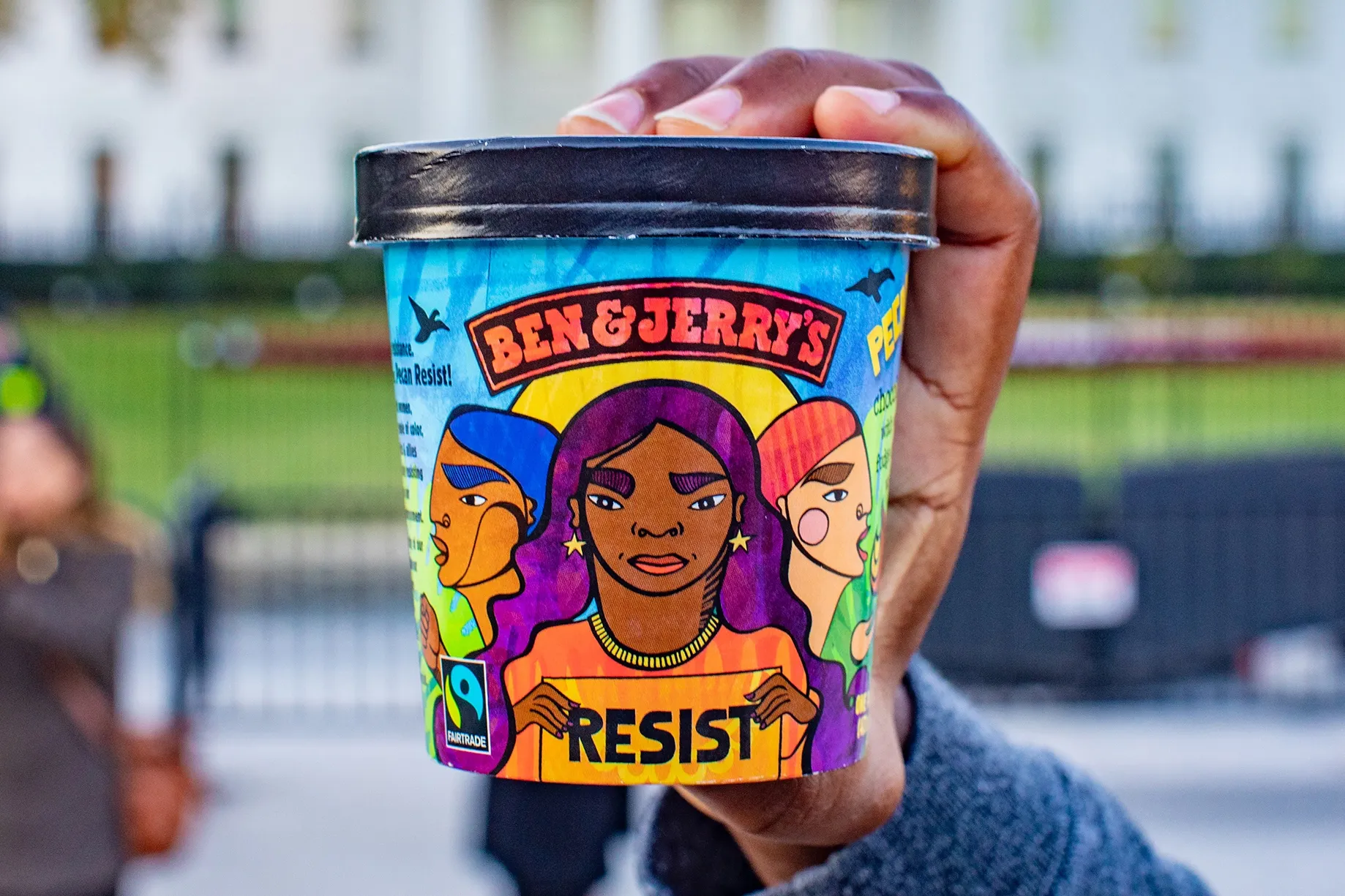
in Vermont. By 1984, they had attracted the unwanted attention of their (much larger) competitor Häagen-Dazs, who, perturbed by their very existence, wanted to push them out of the local market. Ben & Jerry’s responded with not one, but two lawsuits (ah, America) against the parent company, Pillsbury, and an aggressively effective marketing campaign:
“We believed that Pillsbury’s actions were illegal,” says Ben, “but we knew that in a strictly legal fight we’d run out of time and money long before Pillsbury would. Our only option was to rely on our customers and the media to pressure Pillsbury into backing off. So we started printing the slogan “What’s the Doughboy Afraid Of?” on our pint containers, along with an 800 number for the Doughboy Hotline. Everyone who called got a Doughboy Kit, with protest letters addressed to the Federal Trade Commission and the chairman of the Pillsbury board, and a bumper sticker.”
'What's the Doughboy afraid of?' not only dealt with their legal worries, but also gained them widespread attention in the media, bringing this small time business into the limelight and cleverly positioning them as a challenger brand and a genuine threat to Pillsbury. Throughout the next decade, sales increased year on year, and in 1988, the two founders were awarded with the ‘US Small Business Persons of the Year’ prize, which was handed to them by the US President at the time, Ronald Reagan. Did B&J win this purely on their ice cream and rapid growth? We think there’s a little more to it than that…
Ben & Jerry’s breakout moment(s)
As we said before, there is no shortage of activism from Ben & Jerry’s since the beginning. In fact, there’s almost too much to mention. Pivotal in their stern stance on many social and political issues was their initial formation of the
Ben & Jerry’s Foundation. Its original intention was to support community projects, and it was funded by a 10% from the company’s profits. The Foundation currently aims to further social justice, protect the environment and support sustainable food systems by offering grants to grass roots organisations in the US, from the Missisquoi National Wildlife Refuge, to the Salvation Farm.
But their activism goes beyond the Foundation. A quick scroll through their website shows the importance of their efforts to the business. Notable campaigns throughout the decades include:
- 1992: Launched a cooperative campaign with the Children's Defence Fund, in which tens of thousands of postcards were sent to US Congress to raise awareness of children’s basic needs.
- 1989: B&J opposed the use of growth hormones in milk production, criticising its use on cows to boost their milk production volumes.
- 2005: B&J opposed arctic oil drilling by placing a 400kg Baked Alaska in front of the US Capitol Building.
- 2009: they launched an April Fool's Day hoax to raise awareness of cow cloning via a spoof company called ‘CyClone Dairy’.
The brand have also partnered with WWF on numerous conservation projects, have spoken out against Donald Trump’s presidency, protested in favour of same-sex marriage, fought for asylum seekers’ rights, and even tweeted UK Home Secretary, Priti Patel over the UK's immigration policy.
Conservative party member, James Cleverly, criticised the tweets as ‘inaccurate virtue signalling’. While we know it’s important to understand the authenticity and sincerity of any socio-economic criticism, it’s clear to see that Ben & Jerry’s have demonstrated decades of advocacy when it comes to some of the world’s biggest issues. Not so
cleverly now.
“We think the real crisis is our lack of humanity for people fleeing war, climate change and torture. People wouldn't make dangerous journeys if they had any other choice. People cannot be illegal."
How is the BEN AND JERRY'S product different?
Take a look in any supermarket freezer aisle and it’s pretty obvious the influence that Ben & Jerry’s flavours and textures have had on the wider ice-cream market. Anyone who has tried B&J ice-cream will understand the attraction of not only the weird and wacky flavours, but the fun and ferocity you can unlock when digging your way to the bottom of a carton. The brand’s most popular products are a close tie between Cherry Garcia and Cookie Dough, with Chocolate Fudge Brownie a worthy third place (although our favourites include Phish Food and Peanut Butter Cup).
That said, the B&J good stuff comes at a price, financially and metaphorically. A 465ml tub will set you back £4.50, a similar price point to its competitors but more than twice as much as non-branded alternatives. Ingredients-wise, your average tub of B&J ice-cream contains enough calories, saturated fat and sugar to take it to the top spot of almost every ‘unhealthiest ice-cream’ list. Of course, ice-cream was never considered a healthy snack or dessert in the first place, but it’s clear to see that the cutesy flavours and chewable chunks appeal to consumers’ ‘naughty’ side. Helped along by Bridget Jones' famous line about having an affair with two men simultaneously called Ben & Jerry, a break up induced self-pity party wouldn't be the same without a tub of B&Js and
Céline Dion belting out.
Another thing that makes Ben & Jerry stand out is their distinctive packaging and brand design. From pun-based names, brightly coloured, almost child-like, illustrations and fluid handwritten fonts, everything about their aesthetic draws the consumer back to that small group of artisans making hand-mixed ice cream for the weary traveller. Does their multi-million dollar valuation make it seem a little contrived? Perhaps, but customers seem to like it. The eco-credentials of the packaging are also a little suspect. B&J did introduce ‘eco-pint’ cartons, made from recycled and unbleached materials, but due to cost, supply, and manufacturing issues, were forced to switch back to bleached paperboard. We’d love to know more here. Can a business owned by a €52 billion publicly-listed company like Unilever really blame cost and supply chain issues for not being able to offer more carbon conscious packaging?
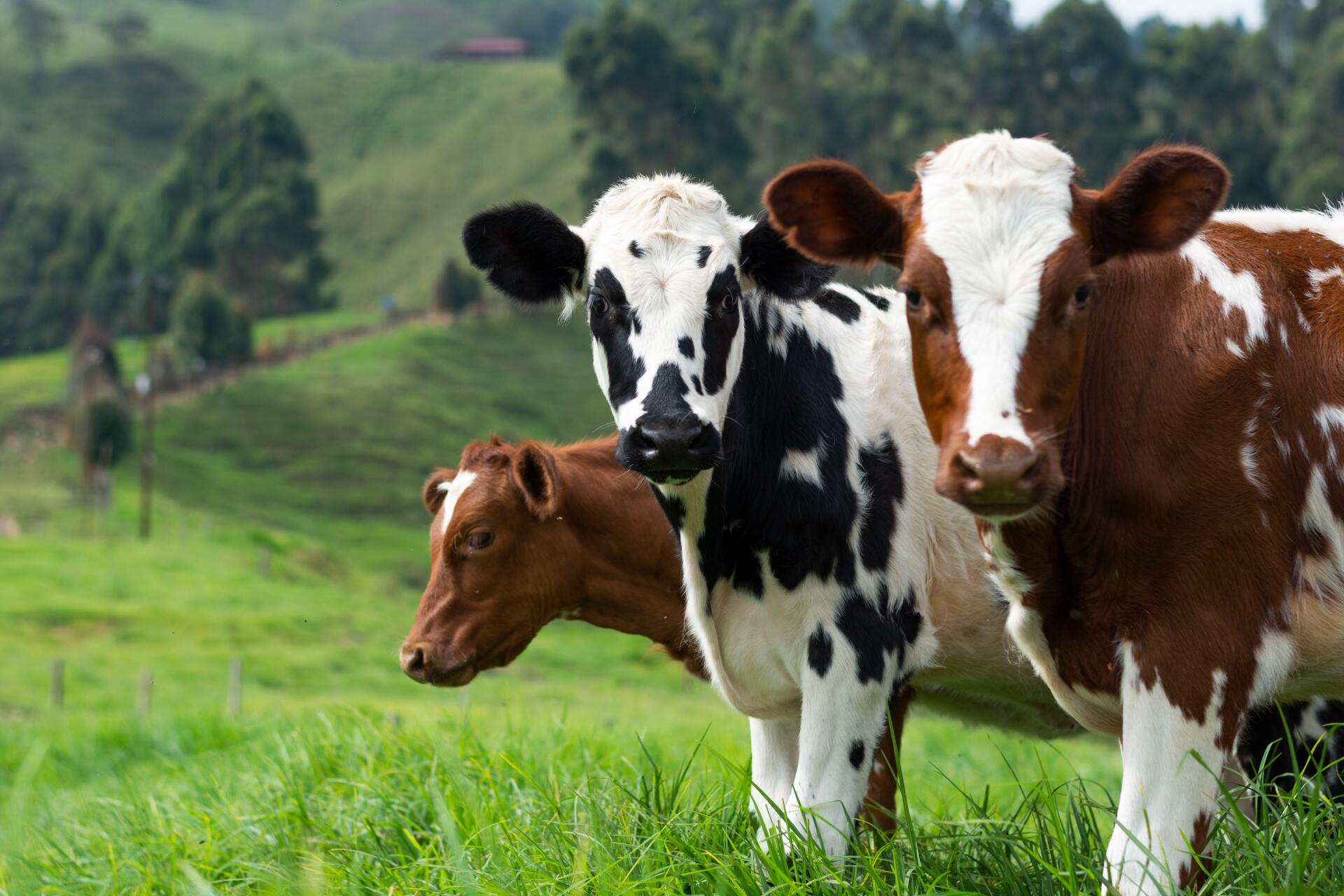
Campaign focus: MOOTOPIA
Talking of sustainability, we should probably talk about the unavoidable fact that Ben & Jerry's are an ice-cream manufacturer, and ice-cream is made from... duh duh duh milk.
If you didn’t know already, dairy is responsible for a great deal of greenhouse gas emissions throughout the world, and is over half of B&J’s emissions.
Project Mootopia is B&J’s grand plan to reduce greenhouse gas emissions in the dairy industry. This campaign sits proudly on their UK website and promises a ‘game-changing, planet-healing initiative’ that will cut emissions by 50% across 15 farms by 2024. The brand plans to do this by feeding their cows high-quality meal plans which include a ‘forage diet’ plus additives. This will reduce the methane that cows release from burping. No joke. Cows burp all day long, and that releases methane – a gas that drastically accelerates climate change. Methane is also released from cows’ poo. One cow can make over 35kgs of poop a day, but B&J are battling this with manure digesters and separators. A technology that can in-turn produce renewable electricity and animal bedding.
This is a commendable effort, and we admire the scientific approach to an industry that's impact is possibly a lot bigger than most people think. Did you know that there are 9.4
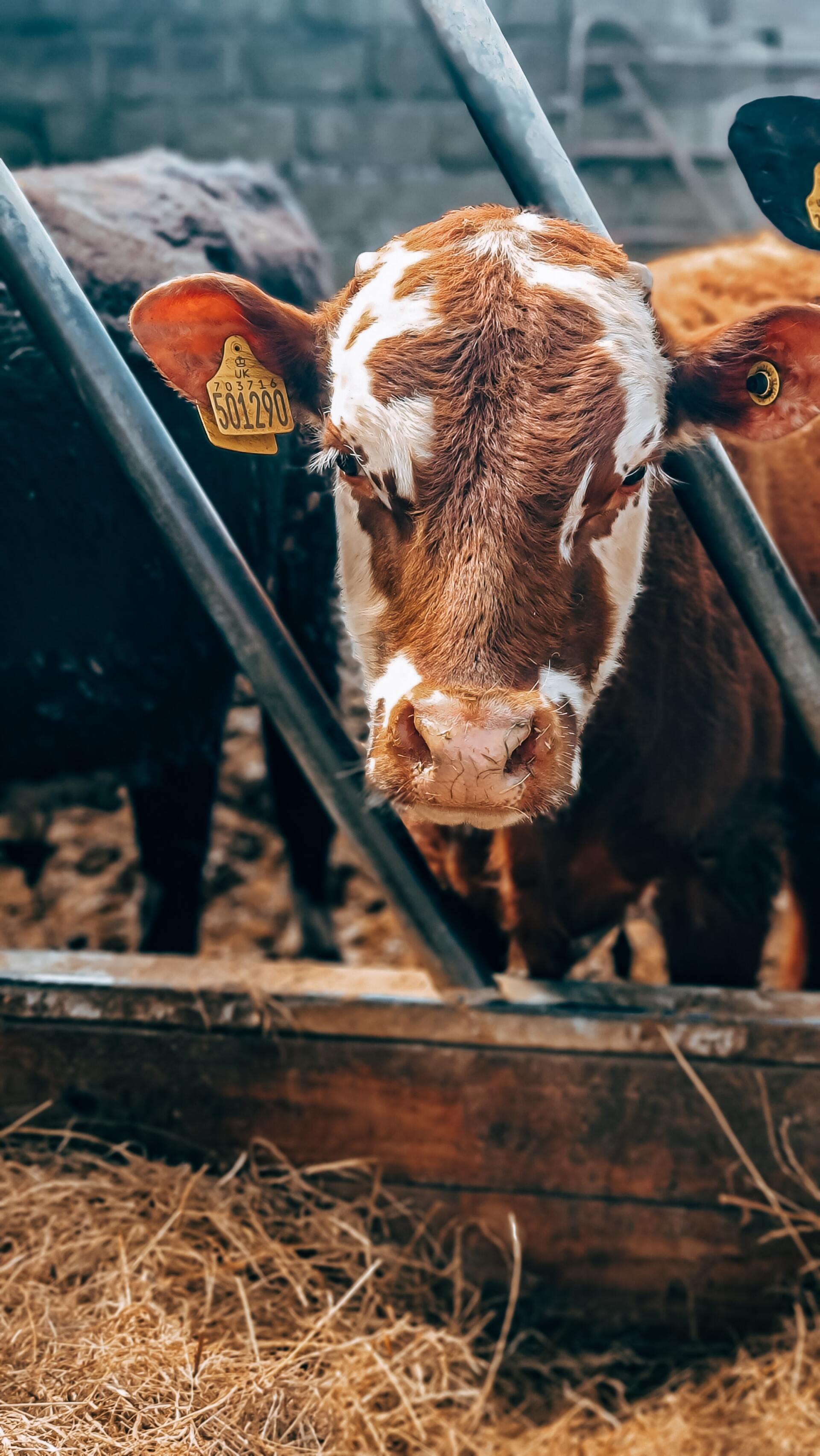
million cows in the UK? The real kicker? Only 1.9 million are dairy cows. The rest are destined for a dinner plate near you.
Mootopia as a ‘campaign’ in the marketing sense is a little weak. Whilst it’s easy to discover on the Ben & Jerry’s website, there’s little press coverage or PR to be found. Bizarrely, ‘Mootopia’ is already a brand name for a lactose and fat free milk product owned by Texan grocery giant, H-E-B. Whilst we commend every single effort of activism seen by B&J over the years, why isn’t Mootopia, their core effort to improve the business’s carbon footprint, being more widely covered and therefore recognised? Are Unilever not showing them the support they need? Have the brand prioritised other efforts over sustainability? Does the average B&J customer even care enough about the planet? Somehow we find it questionable that a brand so dedicated to doing good aren't focusing on the area they can have the biggest impact... it makes all their hard work and activism seem a little smoke and mirrors.
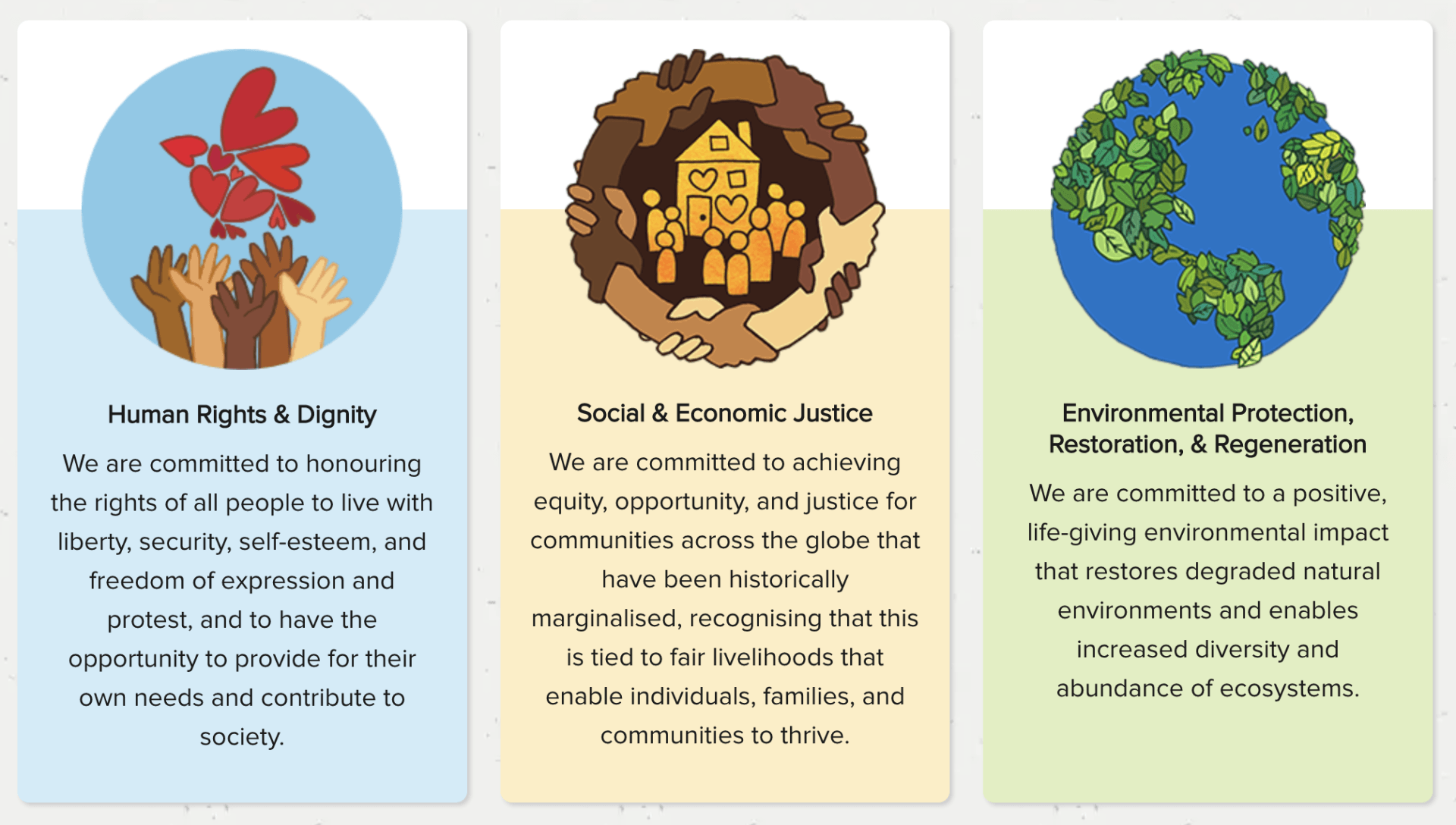
BEN & JERRY's extra efforts
We’ve covered activism quite a lot already, and whilst we missed a few of their more recent efforts, such as boycotting Facebook and even criticising Biden’s handling of the Ukraine conflict, what else can we look at? Well, their marketing team is certainly keen to tell us about their brand values, with several pages on their website dedicated to ‘prosperity and changing the world’. Brand values are a key part of Avery & Brown's discovery work with our clients, so let’s take a moment to look at B&J’s.
- Human Rights & Dignity: honouring the rights of all people to live with liberty, security, self-esteem and freedom of expression and protest.
- Social & Economic Justice: a commitment to achieving equity, opportunity and justice for communities that have been historically marginalised.
- Environmental Protection, Restoration & Regeneration: a commitment to a positive, life-giving impact that restores environments and increases diversity.
Whilst it’s not immediately clear to a first-time visitor (or ice cream-buying customer) exactly how B&J live and breathe these values, a little extra research does throw up several global and regional efforts. It would be great to see more evidence and validation in their marketing, rather than a nicely designed web page. As we said before, how many B&J customers know (or even care) about the company’s mission and values?
In conclusion: Ben & Jerry's purpose
With 202 million cartons of B&J’s sold in the US alone in 2021, the brand has an incredible and market-leading footprint. They are also making clear and concerted steps to reduce their environmental footprint in almost every aspect of their supply chain. Having said that, as a brand with products in so many high street stores, restaurants and outlets, it’s a difficult one to vet. Just think about how many fossil fuel-powered journeys are being made all over the world, every single day, just to put extra tubs of ice cream in a commercial freezer?
Once again, we ask, ‘if we removed all traces of Ben & Jerry’s from the world tomorrow, would we see a greener planet?’ With Patagonia, we chewed the cud on this for some time. And once again, we are of two minds. There is no denying that the ice cream manufacturing process is intensive and arguably, ice cream isn’t quite as important a commodity as, say, clothing. And for a company so unfathomably huge, and owned by one of those most recognised consumer goods PLCs in the world, there are a number of areas where B&J fall short:
- Packaging: this is a problem they could fund and solve overnight.
- Values and mission: this is tucked away on their website far away from the average consumer.
- Product: It's impossible to deny that ice-cream does no favour to the planet or the West's obesity problem. It's hard to see past it to the great work Ben & Jerry's do.
- Activism: are their valiant efforts taking resources away from other areas of their business that could have a bigger overall impact?
Fundamentally, Ben & Jerry’s are a business built on humble beginnings and core values, but has their rapid growth distilled their message? Sadly, that’s sometimes the way the cookie (dough) crumbles.
The Avery & Brown Better Brand Score:
Sincerity: ★★★★☆
Marketing: ★★★☆☆
Design: ★★★☆☆
Leadership: ★★★☆☆
Employer brand: ★★★★☆
Overall score:
4 out of 5
Keep an eye open for Better Brands 03. Hopefully we’ll leave you a little less hungry and finish up on a slightly higher final score!
Share the love
